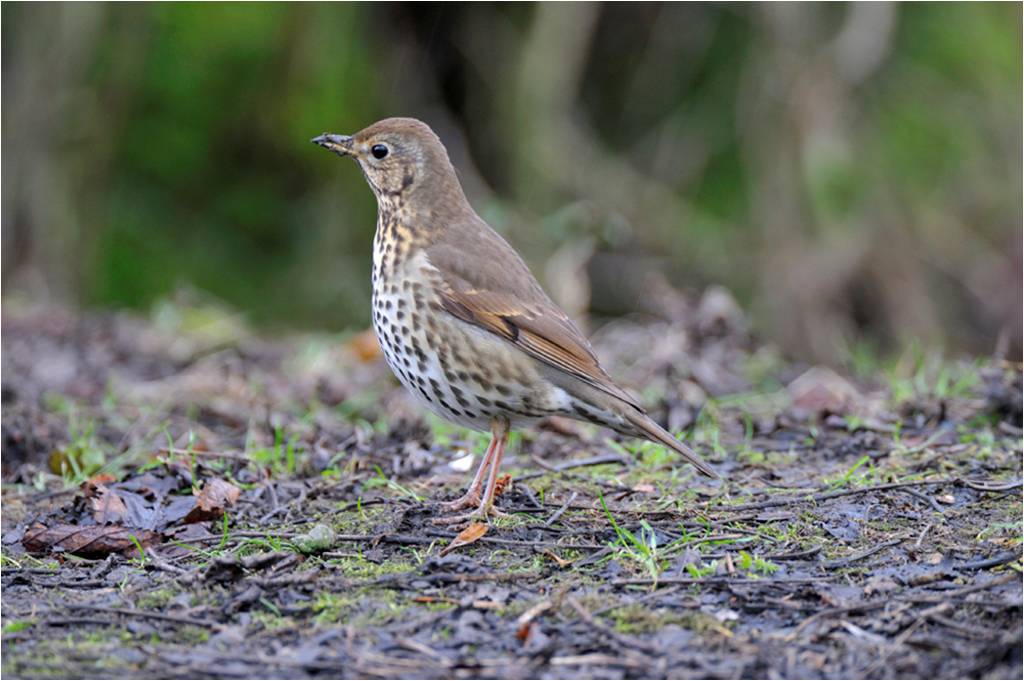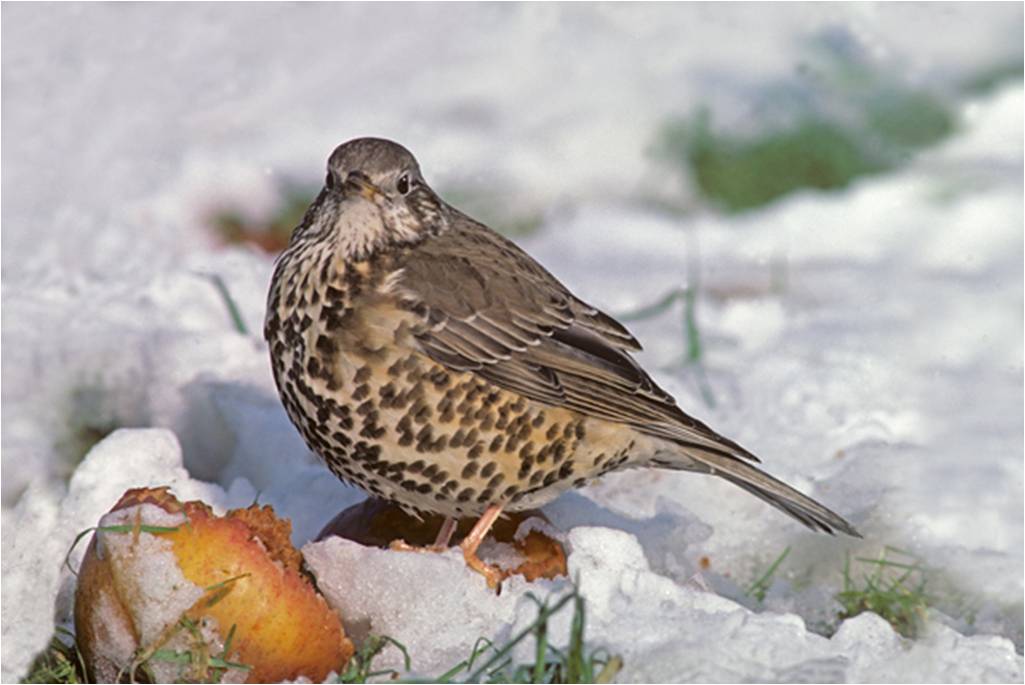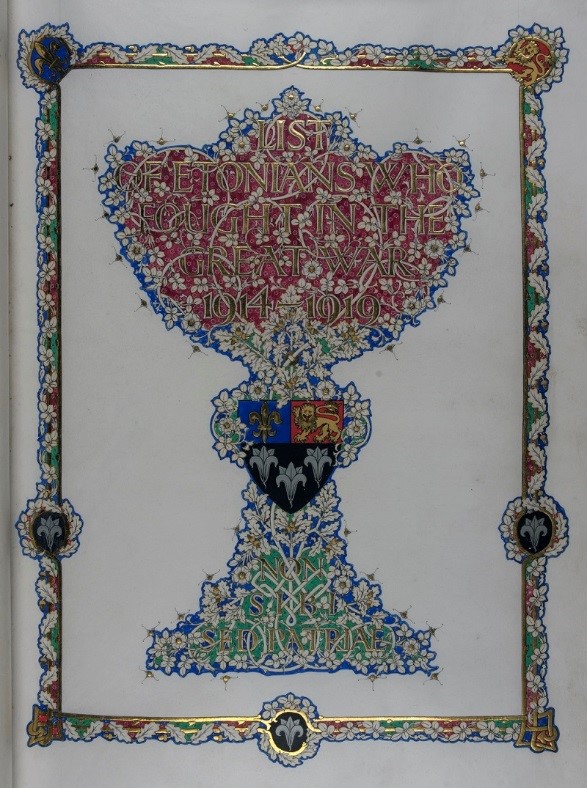

Photos courtesy of Gordon Langsbury (deceased) of Bucks Bird Club.
Throughout the hot weather that we enjoyed this summer, I was ever conscious of how difficult it was for the birds in Eton to keep hydrated and maintain the quality of their diets. Two ever-presents for me were both from the thrush family. We tend to think of all thrushes as having plump breasts with spotted feathers, but in fact thrush species come in many different colours and not all are spotty, by any means. For example, Blackbirds are included in the thrush family, and so were European Robins until very recently.
In my riverside garden, the Song Thrushes love to catch invertebrates and especially snails. These, along with the blueberries and blackberries they steal from my bushes, must provide much-needed moisture to their diet. At least they keep the slug and snail population down and help protect my soft leaved border plants! In the Eton Natural History Museum, there’s a great display showing that some snails are far easier to catch than others. It turns out that the colour and stripiness of snail shells have a huge camouflaging effect on which ones can be seen and caught by thrushes. They break open snails by smashing the shells against a convenient stone, called an ‘anvil’. This habit allows us to know which snail shell patterns they find easier to catch merely by counting the broken shell fragments next to an anvil. As their name suggests, Song Thrushes are renowned for their singing, especially their habit of repeating a variety of phrases. They are also widespread. Settlers Down Under transported the Song Thrush to New Zealand in 1862: they have now become one of the commonest garden birds on both the North and South Islands.
On South Meadow and the nearby Recreation Ground, there have been a handful of Mistle Thrushes around all summer, searching for small invertebrates. Worms retreated so far underground in the dry weather that the thrushes have been restricted to gathering insects. Mistle Thrushes are considerably greyer than the Song Thrush and notably larger. Their outer tail feathers, which are white, are very distinctive in flight. In the winter when resources are scarce Mistle Thrushes are renowned for guarding fruitful bushes from all-comers. Their name is said to come from their love of mistletoe!
George Fussey FRSB, FLS
Curator



